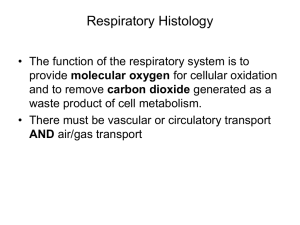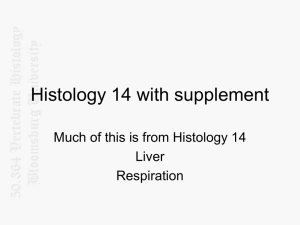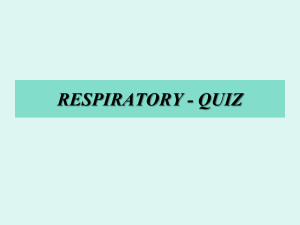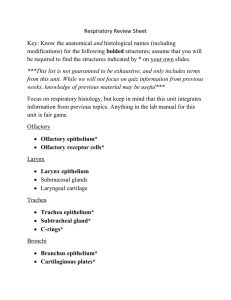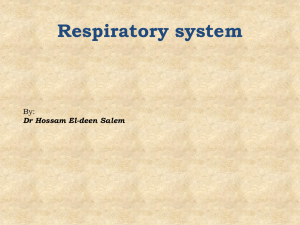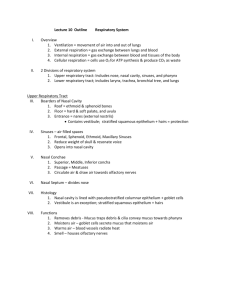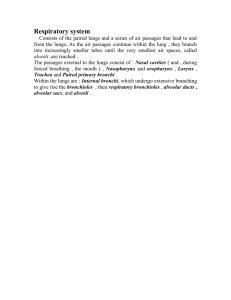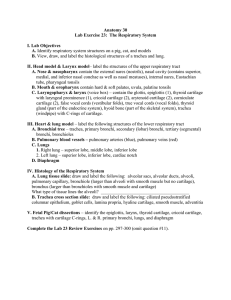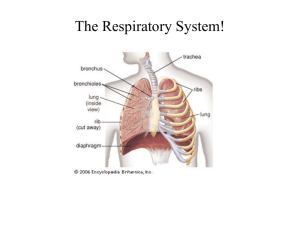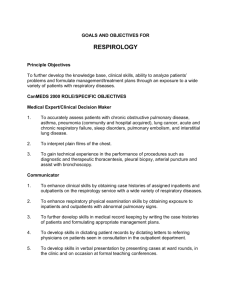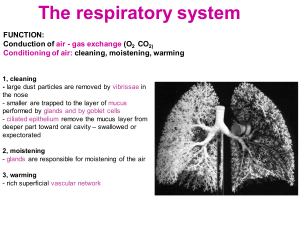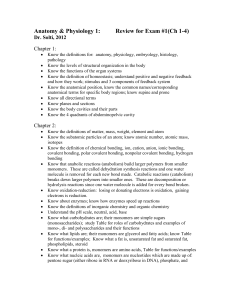Histology Lab 6 – Respiratory System
advertisement
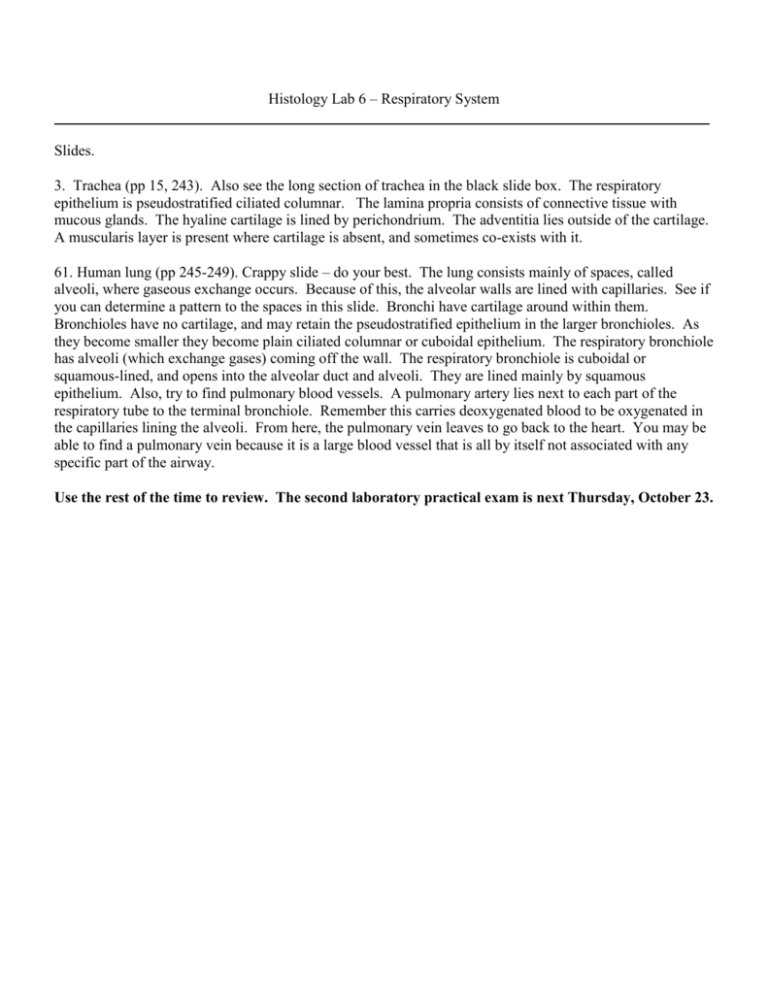
Histology Lab 6 – Respiratory System Slides. 3. Trachea (pp 15, 243). Also see the long section of trachea in the black slide box. The respiratory epithelium is pseudostratified ciliated columnar. The lamina propria consists of connective tissue with mucous glands. The hyaline cartilage is lined by perichondrium. The adventitia lies outside of the cartilage. A muscularis layer is present where cartilage is absent, and sometimes co-exists with it. 61. Human lung (pp 245-249). Crappy slide – do your best. The lung consists mainly of spaces, called alveoli, where gaseous exchange occurs. Because of this, the alveolar walls are lined with capillaries. See if you can determine a pattern to the spaces in this slide. Bronchi have cartilage around within them. Bronchioles have no cartilage, and may retain the pseudostratified epithelium in the larger bronchioles. As they become smaller they become plain ciliated columnar or cuboidal epithelium. The respiratory bronchiole has alveoli (which exchange gases) coming off the wall. The respiratory bronchiole is cuboidal or squamous-lined, and opens into the alveolar duct and alveoli. They are lined mainly by squamous epithelium. Also, try to find pulmonary blood vessels. A pulmonary artery lies next to each part of the respiratory tube to the terminal bronchiole. Remember this carries deoxygenated blood to be oxygenated in the capillaries lining the alveoli. From here, the pulmonary vein leaves to go back to the heart. You may be able to find a pulmonary vein because it is a large blood vessel that is all by itself not associated with any specific part of the airway. Use the rest of the time to review. The second laboratory practical exam is next Thursday, October 23.
